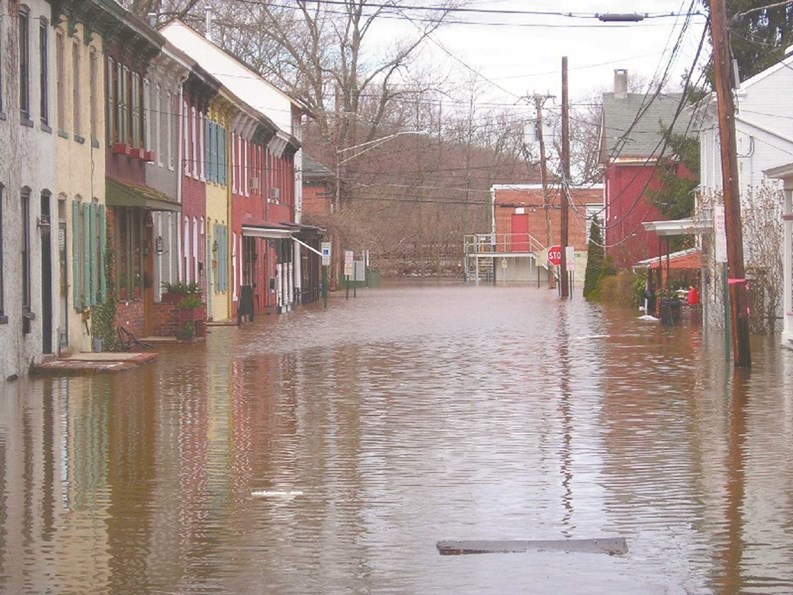Unlike individual apartment owners’ insurance coverage, most co-ops, condos, and HOAs’ insurance policies are pretty standard—they include homeowners’ insurance, liability, and umbrella coverage. Usually, a building’s common areas—such as the hallways, roofs, basements and so on—are insured for liability and physical damage, and occasionally, the association’s insurance policy also covers the standard fixtures in each individual unit.
Just because most HOAs have similar policies covering the basics doesn’t mean that’s all there is to be had in the way of coverage, however. There’s directors and officers, or “D&O” insurance, which protects board members if they are sued in connection with their actions or decisions. And nowadays, more and more boards and associations—not just lenders—require that the shareholders or condo owners carry their own homeowners’ insurance to protect their individual units.
As a result of the subprime crisis, the Federal National Mortgage Association, Fannie Mae, instituted a series of reforms earlier this year intended to prevent further defaults on housing loans. One of these requirements involves a new insurance mandate that directly impacts a condominium buyer’s ability to secure loans. As of March 1, 2009, all condominiums (both new and existing) with 20 or more units must have what’s called fidelity insurance—basically, insurance against thieves—for a loan to be considered “conforming” by Fannie Mae. Previously, only new HOAs were required to have the coverage.
Other types of insurance for co-op and condo units can include coverage for sewer backups, natural disasters, employee thefts and even changes in municipal rules and regulations. Those are just a few of the more specialized types of insurance available that non-insurance professionals—including board members and managers—may not be familiar with. This article will take a look at some of these types of insurance.
Time to Go Green
To begin with, in today’s world of both residential and commercial buildings, “green” is the new byword (in the past, such buildings were merely called “energy-efficient.”). Now, insurance carriers are riding the trend and offering several types of “green” coverage to multifamily buildings.
Tim Earhart, vice president of the Chubb Group of Insurance Companies, says one type entails replacing a green building that has been destroyed by fire or other catastrophe with another green building—or replacing damaged portions of the building with equivalent environmentally-advanced features. The second type pays to replace a damaged “regular” building with a green building, or upgrade a destroyed building’s green status (for example, from LEED Silver to LEED Gold) after a disaster.
In the first case, among other things, the loss payment provisions should include the cost of complying with green building ordinances or laws, and the policy should cover such items as geothermal systems, wind turbines and rainwater storage. Chubb also can reimburse policyholders for the cost of hiring a LEED-accredited professional to help in the redesign and reconstruction of the property.
Replacing an older building with a green one, or damaged portions of an older building with green installations, can be covered by special insurance as well.
Melissa Tolan, a commercial lines account representative with Thomas H. Heist Insurance in Ocean City, New Jersey explains, “...some of these [reconstruction] upgrades include solar panels, less chemical-heavy carpeting, greener flooring and more energy-efficient appliances. There is a charge to add an endorsement to policies.” And while, the Community Association Underwriters of America (CAU) do not have a special endorsement, she states, that the CAU will allow green upgrades granted they meet all structural guidelines. In addition, there may be limitations to offering upgrade coverage for buildings whose electrical and mechanical systems are considered obsolete, have building management issues or for those that are landmarks or are located in landmark districts.
Two companies in particular are aiming for that niche. Missouri-based Fireman’s Fund Insurance Company (a division of international insurer Allianz) and Boston-based Lexington Insurance Company (a division of AIG) are among the first companies today to address that segment of the market they most clearly control: replacement from a loss. “Lexington offers a comprehensive coastal condominium product that is competitive with the standard market programs as far as coverage options go,” says Tolan. In a limited rollout with hopes of being nationwide by the end of the year, the policy allows for the rebuilding of a building to higher environmental standards after a partial or total loss.
Fireman’s Fund will pay to upgrade the building to LEED-certified status by hiring a LEED-certified professional, as well as upgrading building materials and systems—such as upgrading to Energy Star appliances, roofing, plumbing and heating and cooling systems. Lexington’s program provides many of the same features, but uses Energy Star and Green Seal as its benchmarking tool. By committing to upgrading the building these insurers recognize the importance of green building to the environment and to the risk-assessment and value of the property.
Building Equipment
Another area of specialized insurance that HOA boards might look at is that of separate policies for major pieces of building equipment, whether this includes a boiler, HVAC system or other types of machinery, such as the motors used in swimming-pool pumps. All kinds of malfunctions can afflict these items, from explosions in boilers, engines or piping to a breakdown in a building’s central air conditioning system.
The traditional term for the type of policy covering physical plant elements was “B&M,” or boiler and machinery insurance. However this is a misnomer—these policies can cover any type of equipment, from HVAC systems to electrical control panels to security systems. In fact, such contracts today are often known as equipment breakdown contracts, or are simply included in the overall policy for a co-op or condo development.
While most associations generally have similar insurance needs—property, liability, directors and officers, fidelity, worker’s compensation and flood coverage, Tolan suggests, looking for unique features which may require additional coverage. “Properties with elevators, alarm systems, boilers, or pools may need boiler and machinery coverage. Associations with direct employees should have Employment Practices Liability (EPL) [although] most of our D&O carriers include this coverage automatically. It covers companies and individuals against loss (damages and defense costs) arising out of employment practice disputes. Building ordinance and law coverage is [often] overlooked, but we like to offer it to all our clients. Other unique features may be found in the over 55 communities with golf courses, equestrian centers or public pools or in properties with docks, which may then require marina coverage.”
Here Comes the Flood
In a coastal area, such as ours—and especially in the age of global warming—flood coverage is another important type of insurance to consider. Given New Jersey’s miles of coastline, many communities could easily be flooded or suffer damage from a severe hurricane.
Hurricanes and floods, experts explain, are each dealt with somewhat differently in the eyes of insurers. Water damage resulting from hurricanes, would be covered by most basic property damages under the category of “windstorm”—even though the water itself may be what causes the damage. Some policies may exclude coverage for hurricanes of more than a specific strength, requiring buildings to pay a stiff premium for additional coverage.
According to Tolan, FEMA issues a Residential Condominium Building Association Policy form to buildings owned by a residential association, which provides flood coverage for a maximum amount of $250,000 times the number of units. “The RCBAP form is specifically designed for buildings owned by condominium associations that have at least 75 percent residential occupancy. “Under the RCBAP, the entire building is covered, including the common areas, individually owned building elements within the units, and personal property owned in common, if contents coverage is purchased. Loss settlements under the RCBAP is on a replacement cost basis, meaning that it is not subject to a deduction for depreciation. However, co-insurance penalties apply if [the building] is not insured to at least 80 percent of their replacement cost.”
According to some professionals, flood insurance can also include the backup of sewers and drains, which we touched on earlier, or even water overflowing a basement. Anyone who has struggled against the tide of mold and mildew in a recently flooded basement can immediately see why it is so important.
Unit owners located within a “regular program community” can also purchase a dwelling policy for the additional coverage of personal belongings, which provides a maximum coverage amount of $100,000, says Tolan. If the association does not have RCBAP, such policies may also cover interior walls, floors and ceilings, for up to 10 percent of the contents limit. “Use of the contents coverage for improvements is at the discretion of the unit owner and reduces the personal property limit,” she adds. “If the residential association does not have coverage under the RCBAP or if they are underinsured, the unit owner can purchase building coverage up to a maximum of $250,000 under the dwelling form. The loss settlement is the actual cash value, unless the unit is their primary home.”
And although flood insurance can be purchased through your local insurance professional, the underwriting itself is provided by the National Flood Insurance Program (NFIP), an arm of the Office of Emergency Management. The program dates from the late 1960s, and was founded to provide homeowners a more affordable alternative to expensive disaster insurance. Before the NFIP was founded, insurance coverage for flood losses was not provided by any private insurance carriers
Other Types of Insurance
Finally, there are other types of specialty insurance that community association boards may want to know about. One area of concern for the future is that of Internet privacy claims. With more and more associations taking their operations online, the specter of privacy and libel issues is raised. It’s likely that insurers will develop products to cover HOAs in the event that an owner’s personal privacy is compromised, or they bring suit against the association for possibly libelous comments posted on an HOA-administered website. Several of the industry professionals interviewed for this article mentioned coverage for potential liability arising from the misuse or misappropriation of personal information gathered on prospective buyers’ application materials, such as Social Security numbers.
The list of supplementary and specialty insurance options doesn’t end there. In addition to D&O, which was mentioned earlier, Michael Schraer, also with Chubb, lists a few more:
• Alternative key system and lost key coverage
• Garage keepers’ legal liability
• Ordinance and law coverage and increased replacement cost for older buildings
• Builders’ risk insurance for construction projects and renovations
• Pollution liability for mold and issues related to improperly handled water infiltration
• Communicable disease expenses
• Realty tax assessment, which reimburses the value of increased taxes resulting from construction repair or rebuilding.
The Last Word
There are obviously many types of insurance out there—some of which might be of inestimable value to your co-op or condominium association, some of which might be redundant, or entirely unnecessary, depending on your risks and exposures. The best way to decide what your HOA needs is to confer with a trusted insurance professional—and that, combined with a proactive, committed board/management team, is the best insurance policy of all.
Raanan Geberer is a freelance writer, reporter, and editor living in New York City.







Comments
Leave a Comment